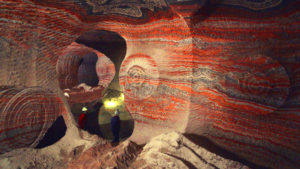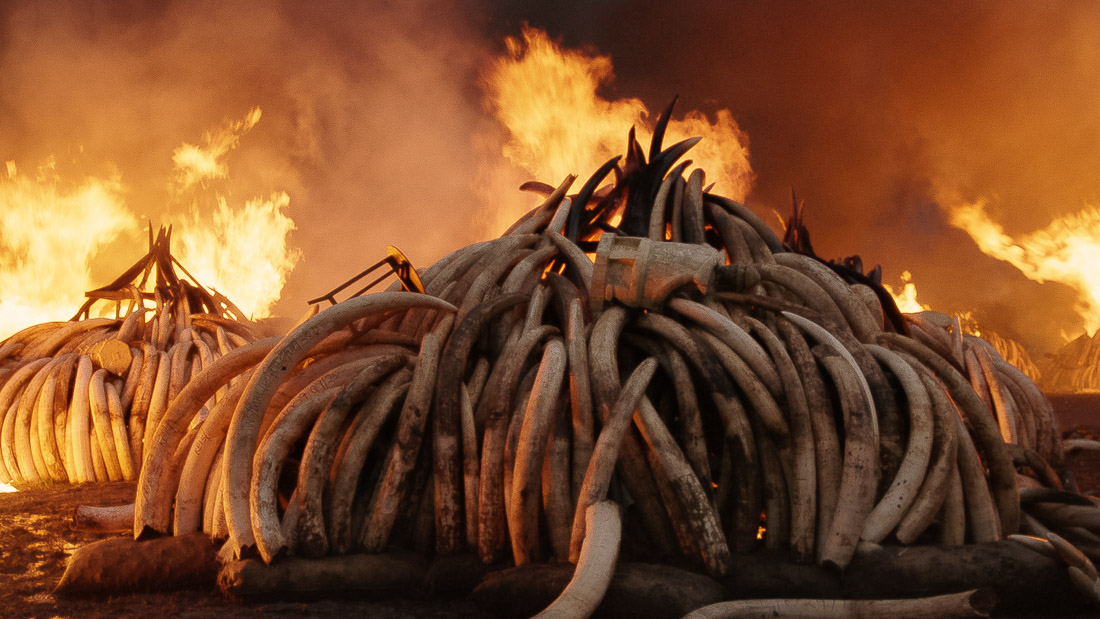“Anthropocene: The Human Epoch” is the third film by Jennifer Baichwal and Edward Burtynsky to address the environment, preceded by “Manufactured Landscapes” (2006) and “Watermark” (2013). The film, narrated in layman’s terms by Alicia Vikander, gives us a stunning visual education of our current world’s state as we leave behind the Halocene Era, one which nature provides changes, to the Anthropocene Era, where man is responsible for all of them.
The opening scene is visually gripping as you are drawn to the flames like a moth that fill every corner of the screen, mesmerizing you with its beauty. You then find the source of the flames which engulf your visual field. The beauty quickly turns to horror and this visual slight of hand pattern occurs throughout the film. What initially is gorgeously striking suddenly comes into comprehensible view to create a disturbing image. It perfectly imitates our own consciousness as we are at first ignorant about issues, but then, with information, we are awakened and see things for what they truly are.

Baichwal and Burtynsky takes us on an extraordinary journey through time and around the world to explore and explain the effects of mankind on our world. Chapter by chapter, beginning with “Extraction,” we understand how our need for earth’s resources have inadvertently depleted other necessary resources. We start in Russia at a huge metal factory. To fuel the fire, trees are cut, but that is a source of oxygen not to mention the benefits of helping with processing carbon dioxide. There’s a delicate balance that has been tipped too far in one direction as the community depends on this plant for wages, but at the same time it’s hurting them. This juggling act, understanding and caring for our environment while attempting to give people a way to support themselves is always at the forefront as is the gluttony and greed, and the land is losing.
This is the theme throughout the film as we travel to Carrara, Italy and witness the extraction of the finest marble in the world. Seen from high above as a gorgeous symmetrical design we plunge more closely and our breath is taken away by the image that lies before us. This cinematic accentuation upon the narration clearly defines the irrevocable damage upon our planet. From the phosphate mines in Florida to the grinding jaws of machinery in Germany which appear like monsters rising above the clouds, we see a land that replicates a scene from “Mad Max” or “Mortal Engines.” There’s a sense of hopelessness at what has been lost.
The film looks at this new era of man, dissecting how we have impacted climate change and extinction of animals. Interviews with residents, employees, and those who are stepping up in an effort to make a difference, save endangered species, or protect our current state from getting worse, support the underlying feel of an emergency. For example, the president of Kenya eloquently states, “…blessings come with duties” as he refers to the land and the gracious endangered species of elephants and rhinoceroses roam the land. As we extrapolate the information, it is evident that our own demise or extinction is eminent. This is a warning tale, an eye-opening, riveting masterpiece of art and story that shakes your soul as it hopefully alarms you into action.
“Anthropocene: The Human Epoch” is masterfully detailed, captivating you visually with a subtle yet haunting musical layer to tell a difficult yet necessary story. From streets comprised of compressed trash surrounded by mountains of rubbish looking serene from high above and plats of water that reflect a contemplative neon green to rocky striations of reds, blues, purples and whites, appearing like ancient stone carvings only to be revealed as a signature of our chemical times and the imprint upon the earth’s surface. There’s an artistry in our devastation making it even more disturbing as you initially find beauty in it.
“Anthropocene” The Human Epoch” is a wake up call. A call to action. A call to awareness. And a plea to understand how we have left the Halocene Epoch and are now in an era of man’s giant and crushing footprint upon our world. The film’s beauty is undeniable as are the horrors it reveals. This is one of the most visually arresting and informative films about our world and our future.
For more information about the film at the Sundance Film Festival, go to SUNDANCE.ORG
4 STARS

